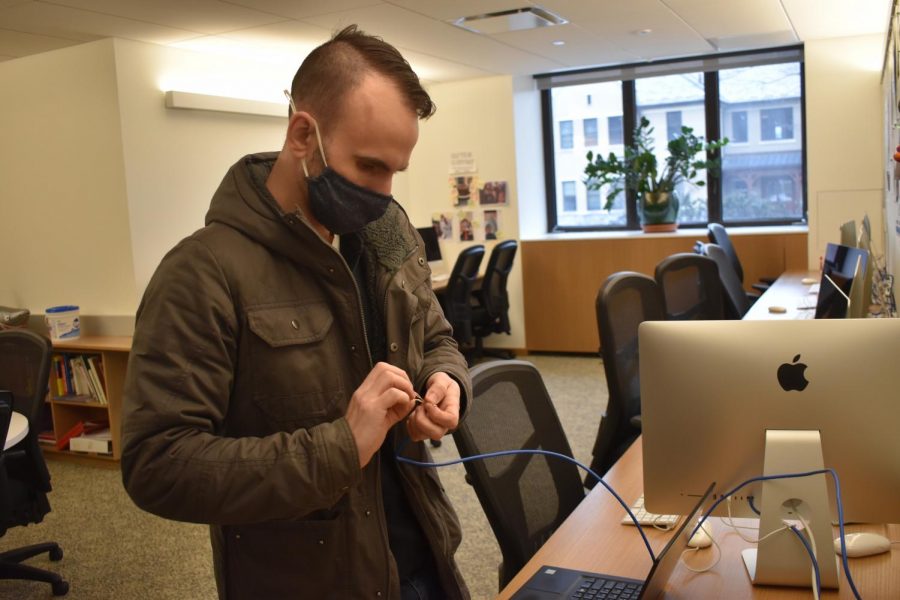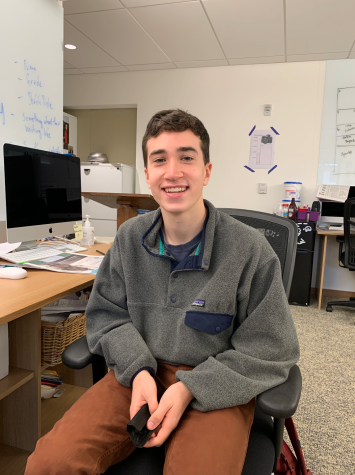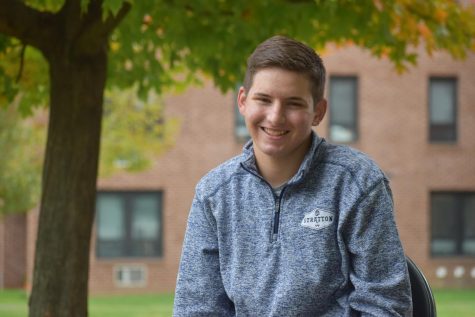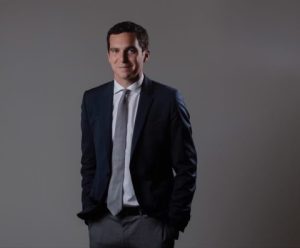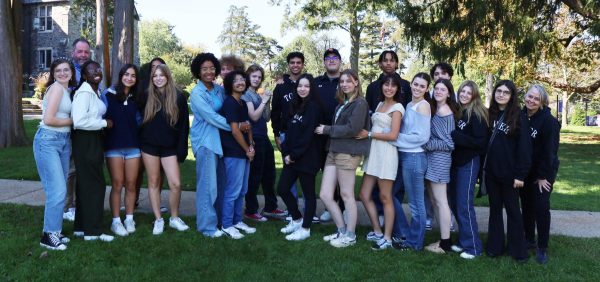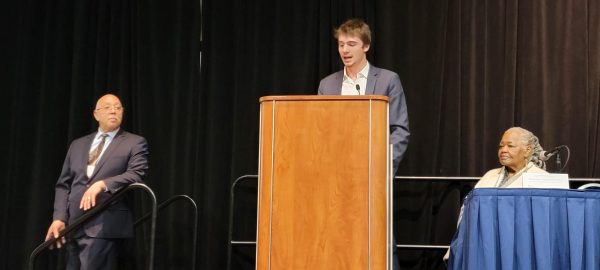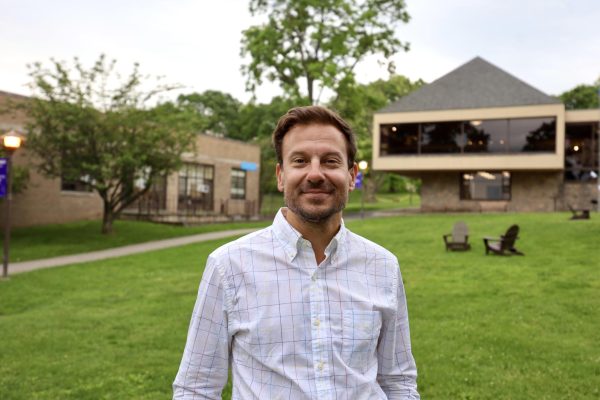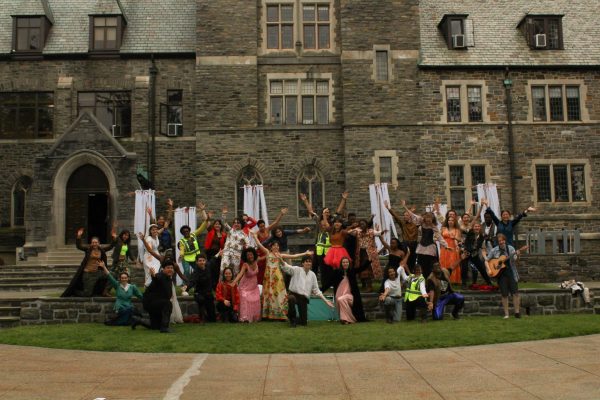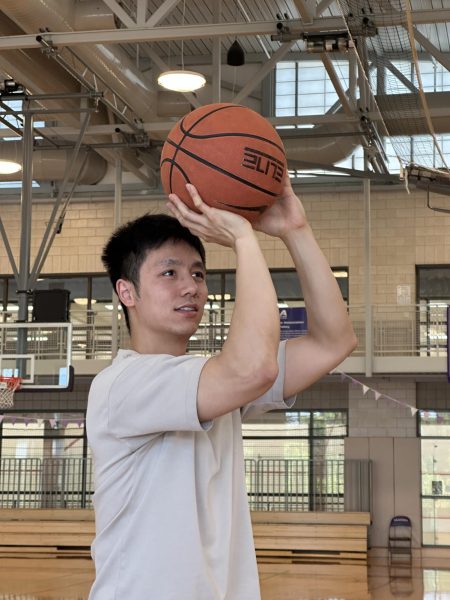A year into the pandemic, tech department soldiers on
Helpdesk technician Neil O’Sullivan tackles a technological problem in the Tower lab. Masters’ tech department has had to deal with a lot more work, both in-person and remote, since the pandemic began and classes shifted online. In addition to Patel and O-Sullivan, Alex Harper, Ryan Levin and Anthony Keaveney make up the rest of the IT crew.
March 9, 2021
“We became a call center overnight. We pivoted from supporting 1000 users to supporting over 4000, globally and in a matter of hours.” Director of Technology Bhavin Patel said.
With the transition from in-person to online learning in March of last year, the entire Masters community became completely reliant on screens. Screens that can glitch out. Screens that require various softwares and programs downloaded onto them. Screens that often prove frustratingly problematic, especially for those who aren’t the most “tech savvy”. Within a matter of weeks, the technology department became tasked with navigating all of these issues. Issues that have not slowed down in almost a year.
Patel said, “It doesn’t really stop. We’re kind of on call all the time. Obviously for sanity purposes, we say we try not to help anyone out after 5 p.m., just because we also need that break.”
From parents to students to teachers, the technology department has become responsible for helping all of these individuals navigate online learning and the technological obstacles that come with it.
Junior Daniela Batista went to the technology department to fix a problem stemming from the wear and tear that online school had on her computer.
“[The technician] brought out this bag of wires and a screwdriver and took apart my computer. He started plugging and connecting wires. It was insane. He kind of just kind of rebuilt my laptop. It was crazy,” Batista said.
“He was super patient and super helpful,” Batista continued. “He really cared about fixing my issue and made sure that it was resolved as quickly as possible; despite all of the other things he had to do, I felt like his priority.”
English teacher Lisa Green echoed the same sentiment.
“When I have an issue with tech during class, I send an email to Help Desk and within seconds someone appears at my door and deals with it, which is really, really amazing. I’m sure that there are a lot of schools out there where students and teachers feel like they’re on their own. We’re so lucky that we have this kind of support,” Green said.
Beyond the student and teacher assistance, the technology department was initially tasked with figuring out the logistics of hybrid learning. Patel explained that many schools have combated hybrid learning by introducing an overwhelming amount of technology.
“I believe that technology should be used to enhance the classroom teaching and learning experience. When it starts to take away from that experience, you have to reevaluate the tools that you are using, and question why you are using those specific tools. It is a matter of using the right tool for the job,” Patel said.
Patel explained that by introducing all of these new technologies, schools are exposing teachers and their classrooms to many “points of failure.” When there is a lot of technology that a teacher needs to adapt to and use, there is a greater risk of error.
“In theory this technology is great, but then you need someone to operate it all. What happens when one of those things needs to be rebooted? What happens when one of the microphones isn’t working? Now you’re turning the teacher right into a tech support troubleshooter,” Patel said.
“Points of failure” has been a term that has guided Masters’ technological approach to hybrid learning this year. The aim has been to use devices in the classroom that teachers can use without extensive training, while cultivating a similar classroom environment to previous years, for once the classroom’s technology is no longer functional, the technology is taking away from the educational experience, Patel explained.
“Classroom support, in-person or virtual, is and will remain our number one priority above anything else that the Technology Department does. If a class is being interrupted due to a technical issue, our response is to drop everything and resolve it – unless the data center is on fire,” Patel said.
However, hands-on classroom fixes are not always conceivable during the school day with students in the classrooms. Many members of the technology department have been working close to seven day weeks just to make the classroom environment functional.
Patel applauded the efforts of the rest of the department: They’ve rarely had a day off. Along with most of the Operations team, the Technology Department has been here on campus, in person, basically every day since June. — Bhavin Patel, Director of Technology
“They’ve rarely had a day off. Along with most of the Operations team, the Technology Department has been here on campus, in person basically every day since June.”
Patel reflected upon how the technology department has evolved over the last few years. Eight years ago, the department consisted of just Patel and Director of Operations Daniel Pereira; now, the department has nearly tripled in size. Patel explained that had Masters been faced with the pandemic years earlier, the technology department could never have imagined tackling the job at hand.
Even now, Patel jokingly said, “We could use ten people, but five will have to do for now.”



